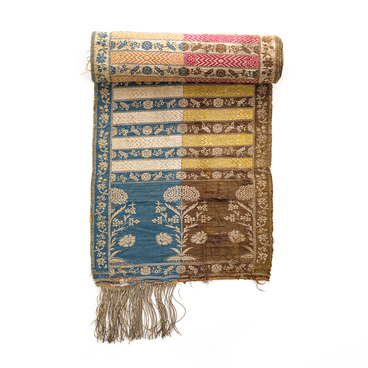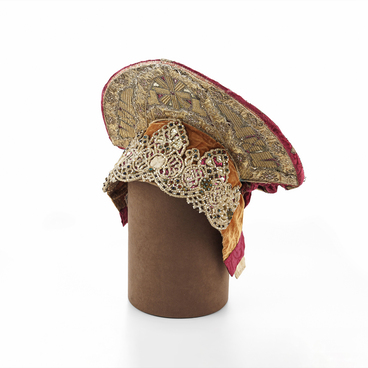The sundress, or sarafan in Russian, is considered an integral part of the Russian national culture.
The word itself is not Russian, but Persian: it was first mentioned in connection with men’s clothing, without indicating its cut and material. Then this term began to denote womenswear.
A sarafan is a type of long-sleeved or sleeveless dress or a high-waisted skirt with suspenders that is worn over a shirt. The term “sarafan” designated the purpose of the garment, its high cost and festive design, rather than its cut.
The cut of the feryaz-style sarafans was different. Each governorate had its own peculiar cut and design. In many villages, feryaz-style dresses were made from one single front panel and one back panel with side gores sewn between them. They had a shallow opening in the front, tied with a ribbon or fastened with buttons. Feryaz dresses sewn from two front straight panels, one straight back panel and side gores were also quite widespread.
Feryaz sarafans could be cold (with a thin lining) or warm (with tow, wool, and fur).
Such outfits were adorned along the armholes and the edge of the collar with embroidery in gold thread and a thin cord. In certain regions, false sleeves made from a lightweight fabric were attached to these festive summer dresses.
Sundresses were worn both in everyday life and at special events. Different models were chosen for different occasions: simpler ones for everyday life, and elegant ones made of more expensive materials for celebrations. Festive sundresses were made of velvet, silk and other expensive fabrics.
In the 19th century, clothing of this type was worn in the Vladimir, Novgorod, Pskov, Tver, and Yaroslavl provinces. In most villages, feryaz sarafans were the festive dresses of girls and married women.
By a woman’s sundress, it was possible to determine the prosperity of her family, her place of residence, marital status and sometimes even the number of children. In the southern provinces of Russia, only unmarried girls could wear a sarafan. Married women were to wear poneva skirts — wool skirts made of several pieces of fabric.



